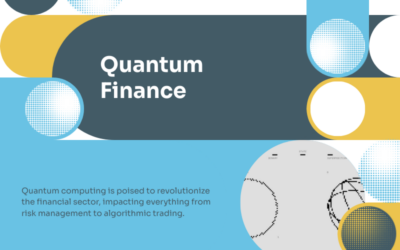In the high-stakes world of investment management, cybersecurity is not just an IT issue—it is a core business priority. With large volumes of sensitive financial data, proprietary trading algorithms, and client information flowing across digital platforms, investment firms are increasingly targeted by cybercriminals. From phishing attacks to ransomware, advanced persistent threats (APTs), and insider breaches, the risks are varied and growing in complexity. The financial cost of a data breach is only part of the problem; reputational damage and regulatory penalties can be even more devastating.
To protect their operations and clients, investment firms must deploy a layered security strategy built on best-in-class cybersecurity tools. But the cybersecurity landscape is broad and constantly evolving. Which tools offer the most comprehensive protection while balancing usability, cost, and scalability?
1. Endpoint Protection Platforms (EPP) and Endpoint Detection and Response (EDR)
Why It Matters:
Investment professionals use laptops, desktops, and mobile devices to access sensitive data. These endpoints are often the weakest link in an organization’s security posture.
Top Tools:
- CrowdStrike Falcon: Known for its lightweight agent and cloud-native architecture, CrowdStrike offers both EPP and EDR capabilities. It uses artificial intelligence to detect threats in real-time and respond to breaches across the enterprise.
- SentinelOne Singularity: Offers autonomous protection, detection, and response powered by behavioral AI. It’s ideal for investment firms that require low-latency protection with minimal impact on system performance.
- Microsoft Defender for Endpoint: Especially effective for firms already using Microsoft 365, this tool provides integrated threat intelligence, attack surface reduction, and endpoint analytics.
Key Features to Look For:
- Real-time monitoring and threat hunting
- Ransomware rollback capabilities
- Low system resource usage
- Integration with Security Information and Event Management (SIEM) systems
2. Security Information and Event Management (SIEM)
Why It Matters:
A SIEM system collects and analyzes log data from across your IT infrastructure, helping detect anomalies and respond to threats before they cause damage.
Top Tools:
- Splunk Enterprise Security: Offers advanced analytics, machine learning, and customizable dashboards. Splunk is a favorite in financial services for its scalability and strong data correlation capabilities.
- IBM QRadar: Provides real-time visibility into enterprise environments and prioritizes threats based on severity. Its AI-driven threat detection is well suited for regulated sectors like finance.
- LogRhythm: Offers a balance of performance and affordability with strong forensic capabilities and intuitive dashboards.
Key Features to Look For:
- Real-time alerting and incident correlation
- Compliance reporting (e.g., for SEC, FINRA)
- Integration with EDR and firewalls
- Scalability for growing firms
3. Email Security
Why It Matters:
Email remains one of the most common attack vectors for phishing and social engineering attacks—two of the top threats to investment firms.
Top Tools:
- Proofpoint: Offers advanced email threat protection, including attachment sandboxing, URL rewriting, and impersonation detection. It also includes data loss prevention (DLP) features for sensitive communications.
- Mimecast: Provides secure email gateways, archiving, and continuity solutions. Known for its robust phishing protection and business email compromise (BEC) prevention.
- Microsoft Defender for Office 365: For firms using Microsoft 365, this tool adds an extra layer of protection against phishing, malware, and zero-day threats.
Key Features to Look For:
- AI-powered threat detection
- Email encryption and secure messaging
- User training and simulation for phishing awareness
- Threat intelligence feeds
4. Identity and Access Management (IAM)
Why It Matters:
Managing who has access to what—and under what circumstances—is essential for minimizing internal and external threats. Investment firms need fine-grained control over user roles and privileges.
Top Tools:
- Okta: Offers single sign-on (SSO), multi-factor authentication (MFA), and lifecycle management. Okta integrates with virtually any cloud or on-premise application.
- Microsoft Entra ID (formerly Azure AD): Provides a highly scalable identity management platform that integrates seamlessly with Microsoft services. It supports conditional access policies and passwordless login options.
- Ping Identity: Known for its enterprise-grade identity federation, this platform enables secure access across hybrid environments.
Key Features to Look For:
- SSO and MFA
- Conditional access policies
- Role-based access control (RBAC)
- Integration with HR and user provisioning systems
5. Data Loss Prevention (DLP)
Why It Matters:
With sensitive data constantly moving between users, devices, and cloud platforms, preventing unauthorized sharing or exfiltration is critical—especially under financial regulatory mandates.
Top Tools:
- Symantec Data Loss Prevention (Broadcom): Offers deep content inspection and policy enforcement across endpoints, emails, and cloud apps.
- Forcepoint DLP: Known for behavioral analytics and incident risk scoring, it provides insight into insider threats.
- Microsoft Purview DLP: Integrated into Microsoft 365, this tool provides comprehensive policy management for preventing sensitive data leaks.
Key Features to Look For:
- Predefined templates for financial data (e.g., credit card, PII, investment profiles)
- Real-time content inspection
- Endpoint, network, and cloud protection
- Policy violation alerts
6. Firewalls and Next-Generation Firewalls (NGFW)
Why It Matters:
Firewalls act as the first line of defense by blocking unauthorized access to networks while allowing legitimate traffic. Next-gen firewalls offer advanced capabilities like deep packet inspection and application awareness.
Top Tools:
- Palo Alto Networks NGFW: Provides industry-leading application visibility, threat prevention, and centralized management. Its firewall-as-a-platform model suits hybrid work environments.
- Fortinet FortiGate: Offers high-performance threat protection and integrated SD-WAN capabilities. Fortinet is known for affordability without compromising security.
- Cisco Secure Firewall: Ideal for firms already invested in Cisco infrastructure, offering flexible deployment options and real-time threat intelligence.
Key Features to Look For:
- Application-layer inspection
- Intrusion prevention systems (IPS)
- SSL decryption
- Cloud-native firewall options
7. Encryption and Secure File Transfer
Why It Matters:
Client reports, portfolio data, and M&A documents must be encrypted at rest and in transit. Failing to use strong encryption can result in regulatory violations and reputational harm.
Top Tools:
- VeraCrypt: A free, open-source tool for encrypting individual files, drives, and external storage devices.
- AxCrypt: Offers seamless file encryption for Windows environments and is user-friendly for investment professionals.
- Globalscape EFT (Enhanced File Transfer): Designed for secure file transfers with automation and compliance-focused features like audit trails and access controls.
Key Features to Look For:
- AES-256 encryption standard
- Easy integration with collaboration platforms
- Role-based file access
- Secure audit logging
8. Cloud Security Posture Management (CSPM)
Why It Matters:
As more investment firms adopt hybrid and cloud-based infrastructures, managing misconfigurations and vulnerabilities in cloud environments becomes essential.
Top Tools:
- Prisma Cloud by Palo Alto Networks: Offers comprehensive visibility into cloud assets and automates compliance and security enforcement.
- Wiz: A fast-growing platform that scans cloud infrastructure for risks, vulnerabilities, and misconfigured access privileges.
- Lacework: Uses behavioral analytics to detect cloud-native threats across AWS, Azure, and Google Cloud environments.
Key Features to Look For:
- Misconfiguration detection
- Automated remediation
- Compliance reporting for SOC 2, ISO 27001, and other standards
- Visibility across multi-cloud environments
9. Vulnerability Management and Patch Management
Why It Matters:
Outdated software and unpatched systems are common entry points for attackers. Vulnerability management tools help identify and prioritize remediation efforts.
Top Tools:
- Tenable Nessus: A widely used scanner that provides detailed reports on vulnerabilities, misconfigurations, and policy violations.
- Rapid7 InsightVM: Goes beyond scanning to offer live dashboards, automation workflows, and risk prioritization.
- Qualys VMDR: Combines vulnerability management with asset inventory, threat detection, and response capabilities.
Key Features to Look For:
- Scheduled scans
- Integration with patch management tools
- Risk scoring and prioritization
- Policy compliance audits
10. Insider Threat Detection and Behavioral Analytics
Why It Matters:
Insider threats—both malicious and negligent—pose a unique challenge. Behavioral analytics help spot unusual activity that traditional systems might miss.
Top Tools:
- Varonis: Monitors file systems and user behavior to identify abnormal activity, such as mass file deletions or off-hours access to sensitive folders.
- ObserveIT (Proofpoint): Captures and analyzes user behavior on endpoints to identify insider risks.
- Darktrace: Uses machine learning to baseline normal user behavior and detect anomalies in real time.
Key Features to Look For:
- User behavior analytics (UBA)
- Insider threat scoring
- Contextual alerts
- Visual forensics and session recording
11. Cybersecurity Awareness and Training Tools
Why It Matters:
Technology alone is not enough. Educating employees on phishing, password hygiene, and secure file sharing can dramatically reduce the risk of breaches.
Top Tools:
- KnowBe4: Offers a comprehensive suite of training modules, phishing simulations, and user testing.
- Cofense PhishMe: Specializes in phishing awareness with real-world attack simulations and reporting.
- Curricula: Uses storytelling and gamification to improve cybersecurity training retention among employees.
Key Features to Look For:
- Simulated phishing campaigns
- Interactive training modules
- User risk scoring
- Policy acknowledgment tracking
Building a Cybersecurity Stack: Key Considerations for Investment Firms
Selecting the right tools is only part of the equation. Investment firms should also consider the following:
- Regulatory Compliance: Ensure that tools support compliance with financial regulations such as SEC, FINRA, GDPR, and SOX.
- Third-Party Risk: Tools should help evaluate the security posture of vendors and partners.
- Incident Response Planning: Build or outsource a robust incident response strategy, with designated roles, playbooks, and tabletop exercises.
- Integration and Automation: Tools should work together seamlessly, with APIs or native integrations that streamline alerts, reporting, and remediation.
- Scalability: Choose tools that can grow as the firm adds assets under management (AUM), users, or office locations.
Strengthening the Cybersecurity Foundation: Additional Areas of Focus
While building a technology stack is essential, investment firms must also think more broadly about operationalizing cybersecurity. The following areas further enhance a firm’s overall resilience and reduce both the likelihood and impact of cyber incidents.
Regulatory Compliance and Governance Tools
Investment firms operate under strict regulatory oversight. The SEC, FINRA, and international equivalents such as the FCA or ESMA impose cybersecurity requirements to ensure that firms are safeguarding customer data, investment records, and communications. Compliance tools streamline this process by automating policy enforcement and reporting.
Notable Tools:
- Archer by RSA: Offers governance, risk, and compliance (GRC) functionality with customizable frameworks aligned to SEC and ISO 27001 standards.
- LogicGate: A flexible platform for managing audits, controls, and risk assessments across departments.
- ServiceNow GRC: Integrates cybersecurity operations with compliance reporting and control testing, useful for mid-to-large investment firms.
These tools are especially useful during audits and due diligence processes, helping firms prove that appropriate safeguards and procedures are in place.
Managed Security Service Providers (MSSPs)
For smaller investment firms or those with lean in-house IT teams, Managed Security Service Providers (MSSPs) offer an efficient alternative. MSSPs monitor systems 24/7, manage threat detection tools, and respond to incidents in real time. This outsourcing model can help investment firms gain access to enterprise-grade protection without the overhead of building their own Security Operations Center (SOC).
Benefits of MSSPs:
- Round-the-clock monitoring and response
- Access to expert-level analysts and forensic specialists
- Predictable, subscription-based pricing models
- Ability to scale up or down as needed
Firms should vet MSSPs based on their experience in the financial sector, incident response speed, and integration with internal reporting or compliance workflows.
Zero Trust Architecture
Zero Trust is a security model based on the principle of “never trust, always verify.” Instead of assuming that users or systems inside the network perimeter are safe, every access request is treated as potentially malicious. This approach is especially relevant for investment firms with hybrid workforces, remote users, and multiple third-party integrations.
Key Components of a Zero Trust Framework:
- Microsegmentation of networks to isolate sensitive assets
- Continuous authentication using MFA and behavioral analysis
- Endpoint compliance checks before granting access
- Least-privilege access controls
Implementing Zero Trust requires a shift in mindset, but platforms like Zscaler, Illumio, and Google BeyondCorp offer enterprise-ready solutions to support this architecture.
Cybersecurity Metrics and Key Performance Indicators (KPIs)
Cybersecurity investments must be measured and managed like any other area of the business. For investment firms, tracking key metrics ensures visibility into risk exposure and helps demonstrate ROI to stakeholders and regulators.
Important KPIs:
- Mean Time to Detect (MTTD) and Mean Time to Respond (MTTR) to incidents
- Phishing click-through rate after training campaigns
- Patch compliance rate across critical systems
- Number of failed login attempts or blocked access requests
- Data loss incidents flagged by DLP tools
Regular reporting using dashboards and executive summaries ensures that leadership stays informed and prioritizes resources accordingly.
Cybersecurity Trends Shaping the Future
As cyber threats evolve, so must the strategies investment firms use to combat them. Several trends are shaping the future of cybersecurity in the financial services industry:
- AI-Driven Threat Detection: Machine learning algorithms are now being used to detect sophisticated threats faster than traditional signature-based systems. Expect more autonomous detection and response workflows in the years ahead.
- Cloud-Native Security: As firms migrate infrastructure and trading tools to the cloud, platforms like AWS, Azure, and Google Cloud offer native security tools that support granular permissions, activity logging, and identity federation.
- Quantum-Resistant Encryption: While still emerging, quantum computing poses a future risk to traditional encryption protocols. Investment firms handling highly sensitive data may begin adopting post-quantum cryptography in the next decade.
- Board-Level Accountability: Regulators are increasingly holding executives and boards responsible for cybersecurity failures. This will push firms to integrate cybersecurity into broader enterprise risk management strategies and invest in continuous education at all levels of leadership.






